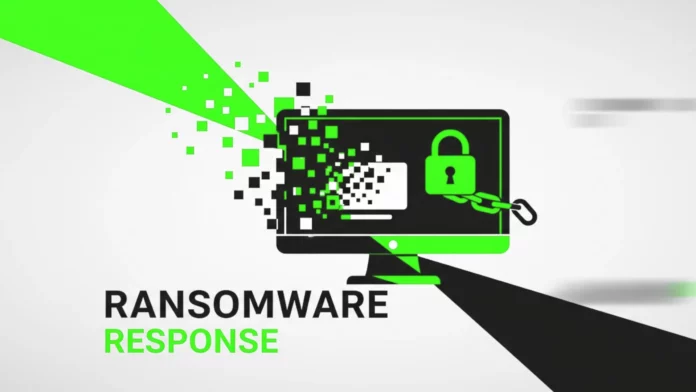A ransomware attack is one of the most serious threats an organization can face.
It’s disruptive, expensive, and can severely damage your reputation. Your response in the first 24 hours is critical. Acting quickly and wisely can mean the difference between containment and catastrophe.
Whether you’re dealing with an active breach or preparing for one, here’s what to do in those crucial first hours.
Step 1: Confirm the Attack and Isolate Systems
Start by verifying the attack. Ransomware doesn’t always announce itself with a pop-up. It may begin silently, encrypting files and spreading across your network.
Watch for early signs:
- Inaccessible files
- Failed logins
- Unusual outbound traffic
Once confirmed, isolate affected systems immediately.
Disconnect devices, disable Wi-Fi and VPNs, and block access at the firewall. This helps stop the ransomware from spreading to shared drives or cloud platforms.
If you have a cybersecurity team or partner, contact them right away. Their guidance can help you act fast without destroying valuable forensic evidence.
Step 2: Notify Internal Stakeholders and Assemble Your Response Team
Ransomware isn’t just an IT issue—it affects the whole business.
Inform key stakeholders, including:
- Executive leadership
- Legal and compliance teams
- Communications team
Appoint a central response lead to coordinate efforts and make quick decisions.
If you have an incident response plan, now is the time to activate it.
Step 3: Secure Backups and Avoid Contacting Attackers
Do not engage with the attackers.
Clicking the ransom note or responding can increase legal risks and make recovery harder.
Instead:
- Secure all backups and system logs
- Identify when the attack started
- Determine which systems and data are affected
This information is vital for recovery and regulatory reporting.
A cybersecurity partner can help assess the damage, trace the attack, and check for data theft, now common in modern ransomware.
Step 4: Report the Incident and Review Legal Obligations
Depending on your industry and location, you may need to report the incident.
This could include notifying:
- The Information Commissioner’s Office (ICO)
- Industry regulators
- Affected third parties
Don’t delay.
Accurate documentation and technical details will make the reporting process smoother.
Step 5: Begin Recovery with Expert Support
Once the threat is contained, start recovery.
This means more than restoring files—you must:
- Remove the attacker’s access
- Patch vulnerabilities
- Ensure systems are safe to bring back online
Work with incident response experts.
They’ll help validate clean systems, restore operations securely, and strengthen your defenses.
Why Speed and Expertise Matter
Ransomware causes more than financial loss.
It disrupts operations, damages trust, and can have long-term effects. A fast, expert-led response reduces the impact.
Cybersecurity firms offer two key services:
- Emergency response: Rapid deployment to contain and recover from an attack
- Incident response retainers: Pre-arranged support with guaranteed access to experts, SLAs, and threat intelligence
Both options help you respond faster and more effectively.
Prepare Now, Respond Better Later
The first 24 hours of a ransomware attack are critical—but they don’t have to be chaotic.
With preparation and expert support, you can act quickly, limit damage, and restore operations with confidence.
When every minute counts, experience is your best defense.

